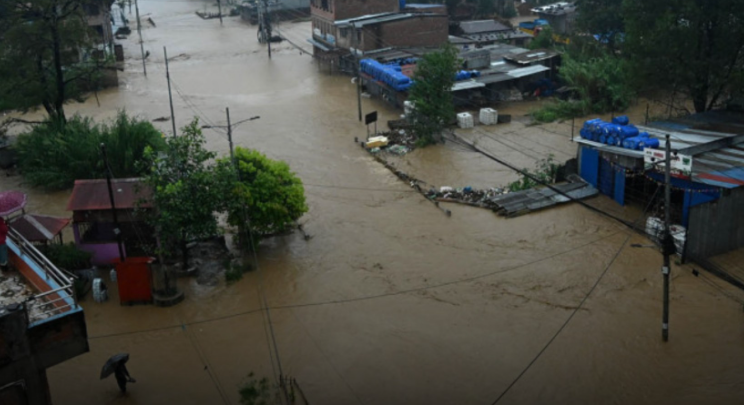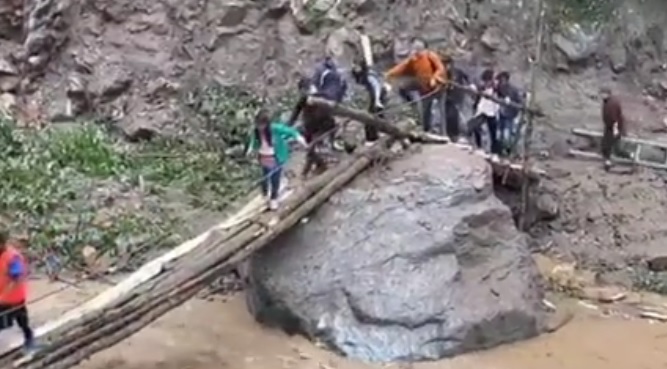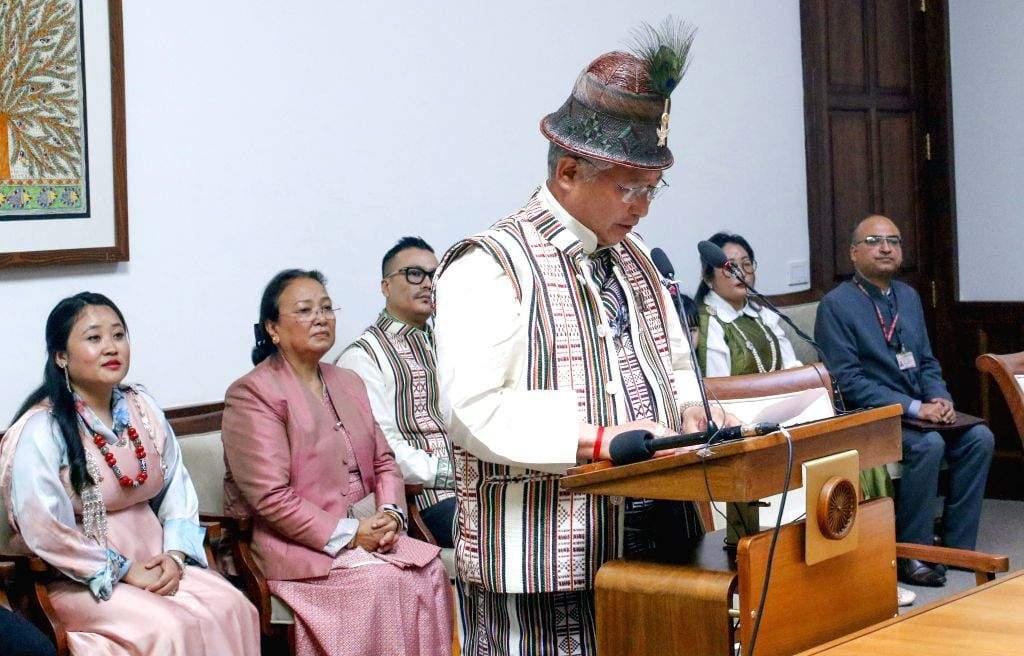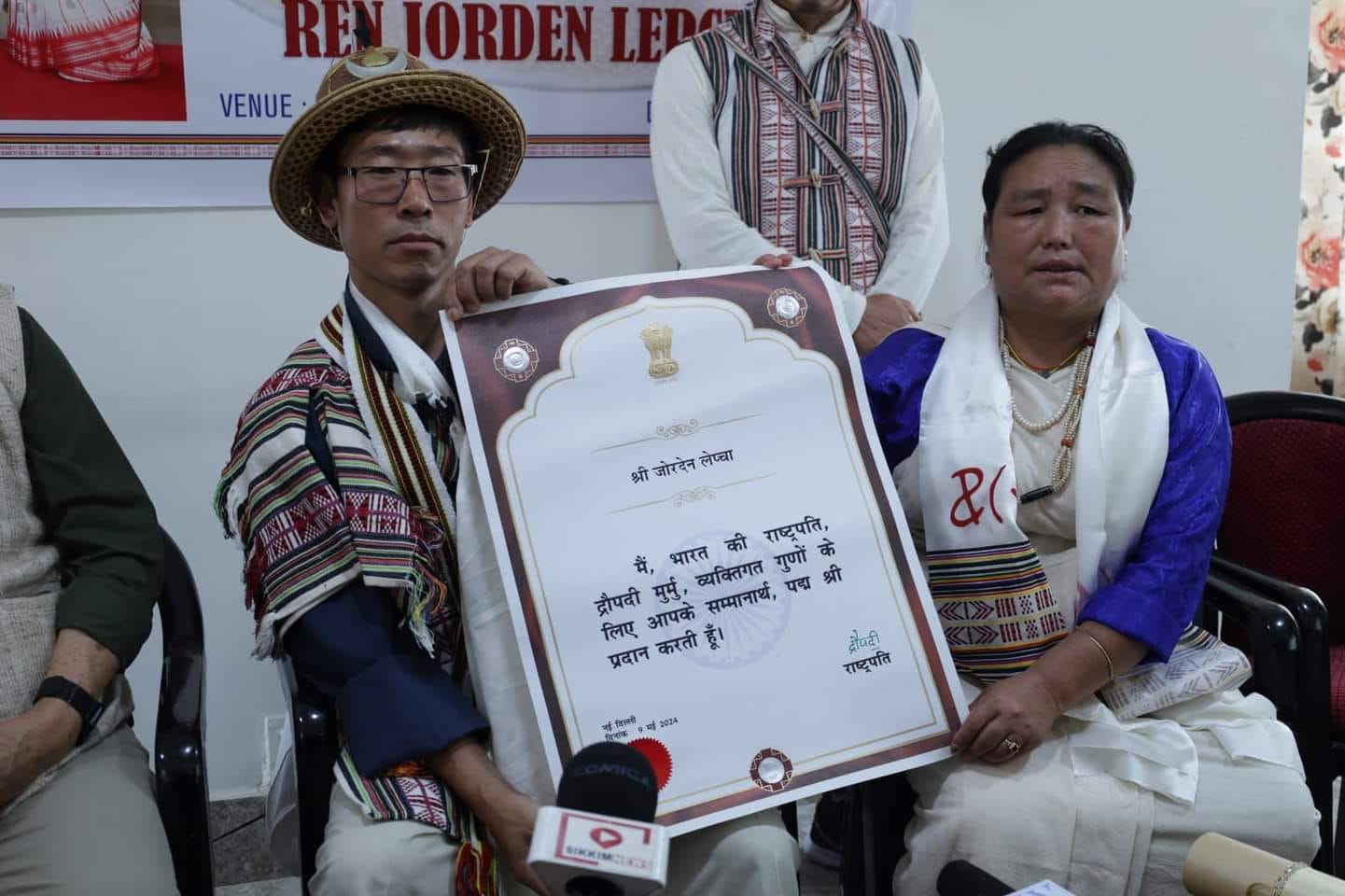
Kathmandu, 29 September : Severe floods and landslides triggered by heavy rainfall have devastated Nepal, claiming the lives of at least 112 people over the past 24 hours, according to official reports.
Kathmandu Valley on Saturday witnessed the highest rainfall since at least 1970, when records began. At least 112 reported dead across the country.
As per Kathmandu Post, the home ministry’s statement issued at 10:30 pm confirmed 99 deaths, 68 people missing and 100 injured.
Data obtained by the Post’s local correspondents and confirmed with the Nepal Police and Armed Police Force headquarters showed 112 deaths nationwide. According to the statistics, at least 20 people lost their lives in Lalitpur, 15 in Dhading, 34 in Kavre, 12 in Kathmandu, 7 in Makawanpur, 5 each in Bhaktapur and Panchthar, 4 in Sindhupalchok, 3 in Dolakha, 2 each in Dhankuta and Solukhumbu and 1 each in Ramechhap, Mahottari and Sunsari districts.
According to the ministry, at least 68 people have gone missing in Panchthar, Jhapa, Mahottari, Kathmandu, Lalitpur, Kavre, Sindhuli, Dhading, Sindhupalchok, Dolakha and Rupandehi districts.
Since Friday, vast areas of the country have been submerged, prompting authorities to issue flash flood warnings across multiple rivers.
In the capital, Kathmandu, rivers have burst their banks, flooding nearby homes and communities. The Bagmati River, a key waterway in Kathmandu, has risen above danger levels, exacerbating the crisis.
The disaster has left over 100 people injured, while 68 individuals are still missing as rescue operations continue in affected regions. More than 200 incidents of floods and landslides have been reported so far, with the numbers expected to rise, according to local police.

On Saturday, Nepal experienced record-breaking rainfall, with 323 millimeters of rain recorded within just 24 hours—the highest in 54 years. Rescue efforts are in full swing, with over 3,000 security personnel deployed, using helicopters and motorboats to reach those stranded. The National Disaster Risk Reduction Management Authority (NDRRMA) estimates that 412,000 households could be affected by monsoon-related disasters.
Shocking visuals have emerged, showing residents seeking refuge on rooftops or wading through floodwaters to safety. In some areas, rescue teams used rafts to pull survivors out of danger. One dramatic video captured the moment a building collapsed under the pressure of floodwaters.
Highways have been submerged and are now inaccessible, further hampering rescue operations and making it difficult for people to evacuate to safer areas.
“I’ve never seen flooding on this scale in Kathmandu,” said Arun Bhakta Shrestha, a climate and environmental expert at the International Centre for Integrated Mountain Development (ICIMOD), reflecting the unprecedented nature of this disaster.
Rescue efforts are ongoing, but with large parts of the country still under water, Nepal continues to face an uphill battle in dealing with the aftermath of this catastrophic flooding.
From Kathmandu Post, 29 September 2024
Relentless rains over the past three days have unleashed catastrophic floods and landslides across Nepal, claiming the lives of at least 112 people as of Saturday night. According to the Nepal Home Ministry, 99 fatalities were officially confirmed, while 68 people are still missing, and 100 others have been injured in the disasters. However, local reports and data from Nepal Police suggest the death toll has reached 112.
The districts of Lalitpur, Dhading, Kavre, and Kathmandu have been hit the hardest. Fatalities include 20 people in Lalitpur, 15 in Dhading, 34 in Kavre, and 12 in Kathmandu, with other deaths reported from multiple districts across the country. Floods and landslides have disrupted daily life, destroying homes, burying roads, and displacing hundreds of families. Highways and roads connecting Kathmandu to other regions have been cut off, stranding thousands of people.
Record Rainfall and Widespread Destruction
Kathmandu Valley experienced its heaviest rainfall since records began in 1970, with flooding exacerbating the devastation. A landslide along the Tribhuvan Highway in Dhading killed 14 people, whose bodies were recovered from buses buried in debris. Rescue teams fear the death toll could rise as efforts to locate missing persons continue.
In Kavre district alone, 34 people were confirmed dead, with 26 still missing. These tragic incidents have occurred in several municipalities, including Temal, Dhulikhel, and Panauti.
Infrastructure Collapses and Economic Impact
Floods have also caused significant damage to vital infrastructure. The Bhotekoshi Bailey bridge, a crucial trade route connecting Nepal with China at the Tatopani border, was swept away by the swollen Bhotekoshi River, severing a major commercial artery. This collapse has stranded local villages and halted the transport of goods, impacting trade ahead of Nepal’s Dashain festival. Additionally, two motorable bridges over the Sunkoshi River, linking various districts, were destroyed, further isolating communities.
Tragic Losses at ANFA Football Academy
Among the victims were six young players from the All Nepal Football Association (ANFA) academy, who perished in a landslide in Makwanpur district. The players had been relocated from their training camp due to the risk of disaster but were tragically buried before reaching safety.
Rising River Levels and Warnings
Several rivers in the Kathmandu Valley, including the Bagmati, Bishnumati, and Dhobikhola, have overflowed, inundating settlements and displacing hundreds. Floodwaters have submerged areas of Lalitpur and Bhaktapur, while the Jagati-Kamalbinayak road in Bhaktapur has been closed as water from the Hanumante River flooded nearby settlements.
In the eastern region, the Saptakoshi River, the largest in Nepal, began flowing over the Koshi barrage due to heavy rains. A red alert has been issued, and all 56 sluices of the barrage have been opened to manage the increased water flow, which reached 567,000 cusecs on Saturday evening. The rising water levels have led to the inundation of around 500 homes in Saptari district.
Ongoing Rescue Efforts
As rescue operations continue, security personnel, including Nepal Police and the Armed Police Force, are working tirelessly to search for missing individuals and provide relief to affected families. However, the scale of destruction has overwhelmed efforts, and concerns remain about the rising death toll as floodwaters recede.
Nepal faces a long road to recovery as thousands of families are displaced, infrastructure is destroyed, and the country braces for more rain in the coming days.






